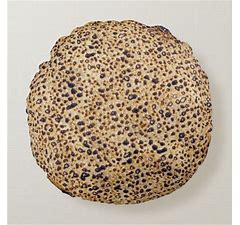Have you ever wondered what the relationship between happiness and matzah is? Rav Yitzchok Fingerer shlita explains: As part of Hebrew grammar, certain letters are understood to be interchangeable. One pair is that of Shin (ש) and Tzaddik .(צ) In line with this, the word for being in a state of happiness – Samaich (happiness) can alternatively be read as Tzemach, the word for “growth.” What is the connection?
Happiness in life is achieved when there is growth. When one develops as a person in his relationship with Hashem, with others, and with himself, one feels a deep sense of fulfillment. On the other hand, when one remains stagnant and does not experience growth in any significant way, unhappiness often sets in.
What does this have to do with Chametz and matzah? Not coincidentally, the nature in which Chametz is formed is the mirror opposite of genuine growth. And indeed, this is reflected by their respective Hebrew words. Tzemach (growth) is spelled in the exact reverse order as Chametz. Chametz is formed by doing nothing to prevent and impede the leavening of flour and water. It is through lack of action that Chametz comes about. The same dynamic is true of growth in life. Merely allowing life to occur and not expending due effort and energy – as occurs when allowing Chametz to form – will leave one stilted and stunted.
Matzah, in contrast, is the result of constant activity. One must consistently work hard – as one does to matzah – to achieve growth and fulfillment. It is only through remaining vigilant and on guard that the flour and water do not leaven and one is left with matzah. Now we can appreciate the correlation between matzah and happiness. Matzah, in contrast to Chametz, represents growth and meaningful work, which in turn leads to a genuine sense of happiness. It is through dedicatedly applying oneself that joy and satisfaction result and a life full of upwards growth and purpose each and every day.
parshaknowledge.com




